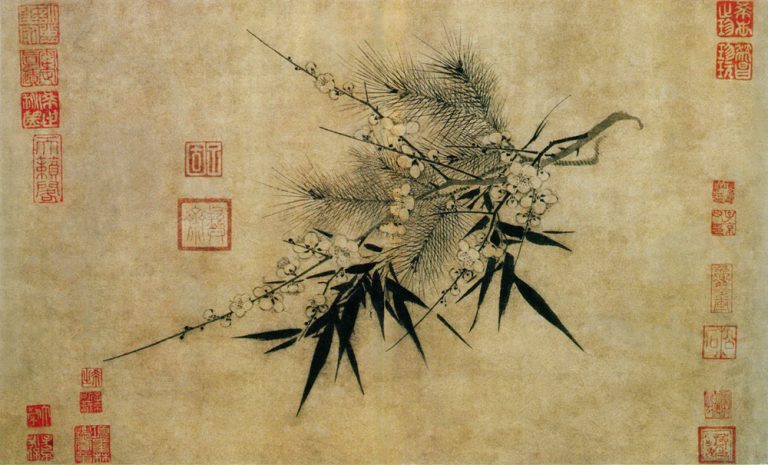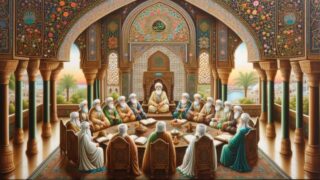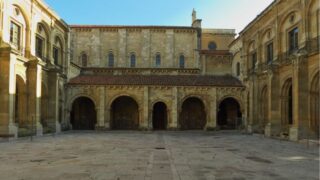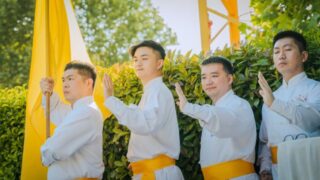The iconographic theme of the undressed Truth lifted out of a well by Time is a powerful metaphor for what happened to Tai Ji Men.
by Massimo Introvigne*
*A paper presented at the webinar “The Truth, Please, About the Tai Ji Men Case,” co-organized by CESNUR and Human Rights Without Frontiers on March 24, 2022, United Nations International Day for the Right to the Truth Concerning Gross Human Rights Violations and for the Dignity of the Victims.


The United Nations day of observance we celebrate today commemorates the political assassination on March 24, 1980, of the Catholic Archbishop of San Salvador, El Salvador, Óscar Arnulfo Romero. The United Nations decided to call this day “International Day for the Right to the Truth Concerning Gross Human Rights Violations and for the Dignity of Victims,” which is an unusually long name. But an important one.
There are several other international days of observance consecrated to human rights. This day is different. It is not specifically about human rights, but about our right to know the truth about violations of human rights. In these tragic days, we all understand, particularly in Europe, how this right to know the truth is important. We are in the middle of a war of aggression where enormous human rights violations are committed. Of course, one party denounces the atrocities, and the other party denies them. What is the truth? We are told we have a right to know the truth, but how can we know the truth?
Perhaps because I am Italian, I believe that sometimes works of art illustrate and solve problems through images in a way words only would never achieve. I would like to present today a painting that is among the most famous images of truth in the history of art. It is called “An Allegory of Truth and Time” and it belongs to the Queen of England. It is at the royal palace of Hampton Court.
It was purchased by the British crown just because it was a beautiful painting, a rare case of a work admired for his message and beauty, including by Queen Victoria of England (1819–1901), without connecting it to a famous artist. Only in the 20th century did art historians demonstrate that its author was a famous Italian Baroque painter, Annibale Carracci (1560–1609).
The painting says it all. It is about Truth but where is the Truth? That the Truth is naked was a truism in art and literature already in Carracci’s times. We still use the expression “naked truth.” It comes from the Roman poet Horace (65–8 BCE) and means that the truth is basically simple. If we put one piece of clothing after the other on it and make it too much “dressed” and complicated, it may no longer be the truth.
However, what is important in the painting is the well. In a part of the story, we do not see—because what we see is what we would call today a subsequent “frame” of the same “movie”—, the Truth was lying at the bottom of a well, meaning it was hidden and very difficult to see. But there is an old man who has lifted Truth out of the well. This old man is Time. Only with the passing of Time does Truth at last emerge from the well.
There is a character dressed, or half-undressed, in green. She is now under Truth’s feet, but we understand that she previously was preventing Truth from coming out of the well. She represents Lie or Ignorance or both, as falsehood and ignorance are often connected.
There are also two figures on the left and the right of the painting. They come from two old Roman statues that were once on the Capitol in Rome (and are now lost), known to Carracci through a book by Vincenzo Cartari (1531–1590) he was familiar with. They represent Good Luck and Good Developments, i.e., a world of harmony, peace, and love that can only flourish when Truth finally emerges from the well.
Before this painting, there was no known image where Truth was coming out of a well, but many similar images appeared afterwards. See for instance the angry Truth with a whip painted in 1896 by the prince of French academic painters, Jean-Léon Gérôme (1824–1904).


An even more explicit connection with human rights emerges in another Truth coming out of her well painted in 1898 by Édouard Debat-Ponsan (1847–1913) within the context of French political controversies. The two characters in old-fashioned clothing represent the clergy and the military that the artist sees as creating obstacles for the Truth to emerge in the Dreyfus Affair, in which a French Jewish officer was falsely accused of treason in a context of antisemitism.


I believe that the connection with the Tai Ji Men case is not difficult to understand, since the Tai Ji Men story reflects an almost stereotypical case of organized falsehood and slander created to hide a gross violation of human rights. In the case of Tai Ji Men, Truth is really naked. It may have technical legal features but in its essence the Tai Ji Men story is basically simple. A non-biased observer would immediately understand that Tai Ji Men is the victim here.
But Truth about Tai Ji Men remained in a well for many years. Yes, occasionally somebody passed close enough to the well to have a glimpse of the Truth and protest, but it did not happen often. One of these pioneers was René Wadlow of the Association of World Citizens (AWC). Already on November 9, 2010, Wadlow, as the then AWC Vice-President and Representative to the United Nations submitted a 1503 procedure to the UN Human Rights Council about the Tai Ji Men case.
A 1503 procedure is a complaint denouncing a case of violation of human rights and inviting the Human Rights Council to investigate. I also salute the distinguished American scholar Ken Jacobsen, who called the international attention on the Tai Ji Men case well before I and others who are here today became involved, and testified in 2016 in a public hearing at the Legislative Yuan in Taiwan.


But these were rare lights in the night. Truth sometimes managed to raise her head outside of the well, but then went down again. Meanwhile, the green Lady Lie was still sitting on the well and trying to prevent Truth from coming out, incarnated in the bureaucrats who continued to lie about the Tai Ji Men case.
It was only from 2019 on and particularly from 2020 that a number of events, and the campaign of the magazine Bitter Winter, started taking Truth out of the well. Carracci was right, only Time may lift Truth out of her hidden place. A significant time has now passed since the Tai Ji Men case started, and many in the world are now discovering the truth about it.
The name of the United Nations day we observe today reminds us that truth is an essential part of the fight for human rights. However, knowing the truth about the violations and the victims does not automatically restore human rights. If nobody knows the truth, violations will surely continue. But even if some know the truth, it is still possible that the perpetrators of the violations will continue in their shameless attitude and wrongdoings.
This seems to be the case today in Taiwan with the Tai Ji Men case. However, thanks to our webinars and web sites, Truth is in the air. And with Truth, as Carracci showed in his painting, peace and love, and sweet and brave friends sharing with us beautiful events. This is the reason we are here today. As Jesus said in the Gospel of John 8:32, “You shall know the truth, and the truth shall make you free.”









